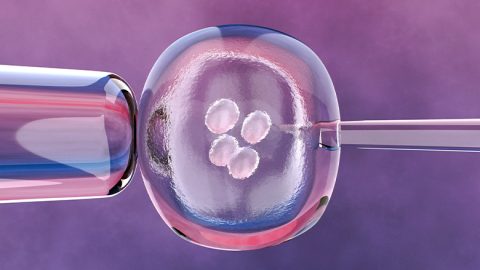Our bodies are comprised of over 30 trillion human cells, an average of 0.002% of them being stem cells. Stem cells are the basic cells that develop and differentiate into different organ cell types. Once our organ systems have matured, stem cells replace old dying cells with new ones throughout our lives. They make life sustainable. Stem cells ensure our bodies function optimally by constantly turning over and replacing old cells with new ones. When disease or injury strikes your body, your stem cells remove and replace damaged cells. This helps our body to heal itself and you continue to function. So in this article, I will discuss some common questions relating to embryonic stem cells with the help of our very own BSHS biology teacher, Mrs. Hickey.
What are the different types of stem cells?
There are many different types of stem cells. The most commonly studied cells are mesenchymal stem cells found in our organ systems. These cells reside along blood vessels, bone marrow, muscle, pancreas, liver, lung, kidney, fat, dental pulp, and joint lining.
What can stem cells be used for?
If you have a significant injury that your body cannot heal independently, help is needed. Additional stem cells may be given to boost your local cells which may help you heal.
What are the limits of Stem Cells?
Most stem cells have limits in their ability to differentiate into various cell types, and they may not be able to generate all cell types found in the body.
What are embryonic stem cells?
Embryonic stem cells are found in the inner cell mass of the human blastocyst, an early stage of the developing embryo lasting from the 4th to 7th day after fertilization. Mrs. Hickey said, “They are very special cells. So they are non-differentiated, meaning that they haven’t developed a path of what kind of cell they’re going to be. And we call them pluripotent stem cells because they could become any type of cell.” This makes them valuable for regenerative medicine and tissue engineering purposes.
What can embryonic stem cells be used for?
Scientists largely agree that stem cells may hold a key to the treatment, and even cure, of many serious medical conditions. Mrs Hickey said, “They could be used for a lot of neurological diseases and injuries. There are a lot of potential applications because our neurological cells are mostly frozen in the cell cycle. So when you get an injury or if you have a disease that affects them, they don’t repair well. So we have the ability with these embryonic stem cells to produce cells that could help repair people with spinal cord injuries, brain injuries, Parkinson’s disease, and cerebral palsy.
What is the source of embryonic stem cells?
Embryonic stem cells are obtained from early-stage embryos — a group of cells that form when eggs are fertilized with sperm at a fertilization clinic.
How does embryonic cell research contribute to the understanding and development of disease?
Mrs. Hickey says “They help tremendously, especially with genetic disorders or development disorders. We are now learning at what part of the development are things going wrong because we can follow those stem cells as they develop and we can also learn what genes are responsible for development.”
What are the ethical concerns?
Mrs Hickey says, “Where these cells come from is the first ethical concern. So people can donate their gametes, whether that’s sperm or egg, and they’ve got the right to donate them but the question lies once the gametes are fertilized, is that considered an individual and does that embryo have autonomy or not? And that’s kind of where the ethical questions lie.







